Ideas
RSS And Freedom Struggle: Separating Facts From Fiction, Propaganda From History
Aravindan Neelakandan
Apr 19, 2017, 04:07 PM | Updated 04:07 PM IST
Save & read from anywhere!
Bookmark stories for easy access on any device or the Swarajya app.
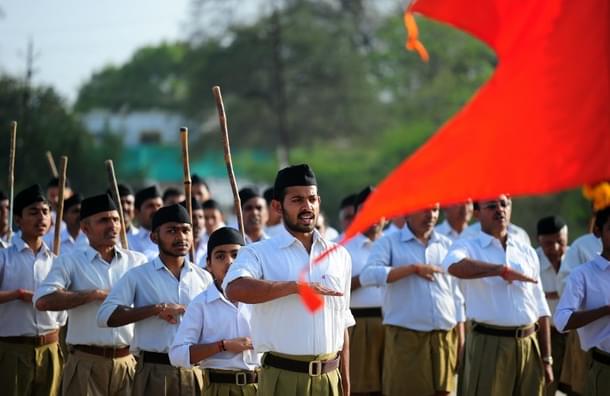
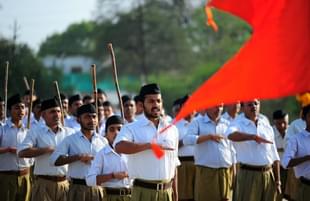
Here is why that view is ill-informed and wrong.
Of late, it has become fashionable for the old establishment media, in their new avatars, to spread the line that the Rashtriya Swayamsevak Sangh (RSS) and its leaders did not participate in the freedom struggle. So, we have an article which authoritatively claims that ‘Hedgewar, the freedom fighter, was a pre-RSS Congressman, arrested and sentenced to a year’s imprisonment for his role in the Khilafat movement (1919-1924) – and that was his last participation in the freedom struggle.’
Here is the picture of Dr Hedgewar, in 1930, that is five years after he started the RSS, participating in the forest Satyagraha launched by Mahatma Gandhi.
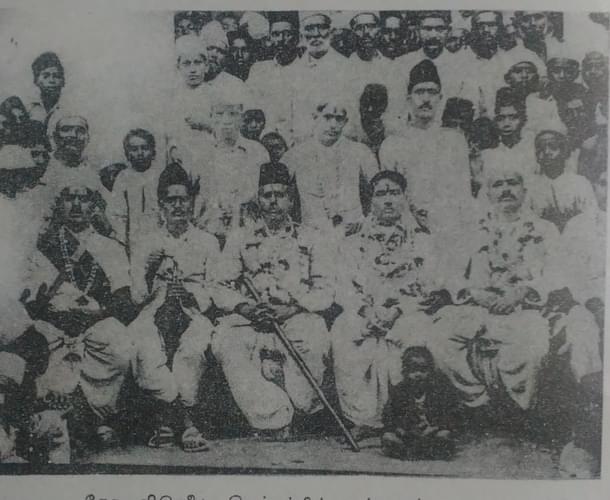
In 1930, when the Sangh was five years old, the Congress, having passed the resolution for complete independence a year earlier in December 1929, had announced that it would celebrate 26 January, 1930, as Independence Day. Following this, Dr Hedgewar wrote to all the Sangh officials:
The Congress has declared ‘independence’ to be its goal and the Congress Working Committee has announced that 26 January 1930 be celebrated as ‘independence day’ throughout the country. It is but natural that all of us should feel heartened that this all-India national body has come close to its goal of independence. It is, therefore, our duty to cooperate with any organisation that works keeping this purpose foremost. Therefore all shakas of the RSS should organise the gathering of all the Swayam Sevaks at six ‘o clock in the evening and salute the national flag which is the saffron flag. The true meaning of independence and how to present its goal must form the essence of the talk. Since we have accepted this goal of the Congress, the party must be congratulated for it. The report of this programme must be sent to us.(Dr Hedgewar’s letter dated 21-January-1930, Rakesh Sinha, Dr Keshav Baliram Hedgewar, Publications Division, 2015, p.95)
For those who would like to criticise Dr Hedgewar for calling the saffron flag as the national flag, let us remember that a year later in April 1931, the Congress Working Committee would appoint a flag committee which would also include Moulana Abul Kalam Azad and it would recommend the saffron flag as the national flag in its final report with the following words:
We felt that the flag must be distinctive, artistic, rectangular and non-communal. Opinion has been unanimous that our national flag should be of a single colour except for the colour of the device. If there is one colour that is more acceptable to the Indians as a whole, even as it is more distinctive than another, one that is associated with this ancient country by long tradition, it is the Kesari or saffron colour. ...
The Sangh as an organisation nevertheless kept away from all agitation-based politics. Not only did it keep away from Congress agitations it also never took part in the Hindu Maha Sabha ones. When the Maha Sabha announced its agitation against the Nizam, the Bhaganagar Satyagraha, the RSS refrained from participating in it.
A prominent former member of the RSS from Poona, who was with the Hindu Maha Sabha then, was very angry with the RSS for this. His name was Nathuram Vinayak Godse. He openly accused the RSS of frittering away the Hindu energy. Despite great respect that the Sangh had for Veer Savarkar, on 8 April 1940, in Poona, the RSS head Bhaurao Deshmukh gave a reply to the fringe elements in the Hindu Maha Sabha:
First of all, I wish to tell the malicious minds that the RSS is neither a military force for the Hindus nor the military wing of the Hindu Mahasabha. The Sangh’s endeavor is to make the Hindus nationalists in the true sense...
It is interesting to note that though individual leaders of the Congress and Hindu Mahasabha praised the RSS for its discipline, the absence of untouchability and the services it rendered, both the organisations wanted the Sangh to be under their political control. When the RSS refused to play party, scouts for both the parties, the Indian National Congress and the Hindu Mahasabha accused the Sangh of being communal and anti-Hindu respectively.
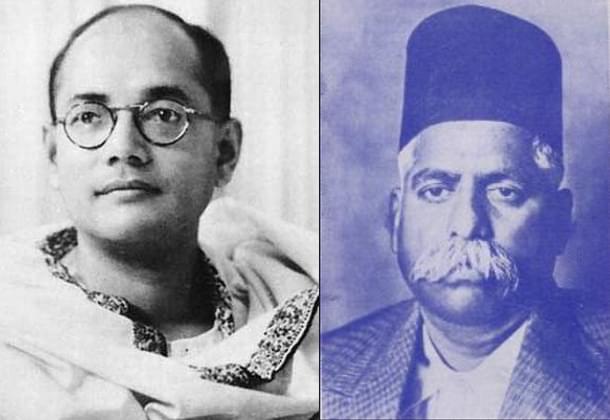
Despite strict non-involvement of the RSS in political movements directly, the Sangh was ready to help any political movement indirectly by supplying its cadre and allowing it to give their faculties and facilities, provided it worked for the cause of India’s welfare. Trailokyanath Chakravarty (1889–1970) was a Bengali revolutionary and freedom fighter. He met Dr Hedgewar who promised him that Sangh would provide him with cadre for the future revolution he was planning. (Satyavrata Ghosh, Remembering our revolutionaries, Marxist Study Forum, 1994 p.57) Sangh also helped Rajguru when the revolutionary lived as a fugitive.
Those in the Congress who could not rise above the pettiness of sectarian politics had passed the resolution in 1934 that their members could not join the RSS. Eminent historian Dr Kanchanmoy Mojumdar reveals that four years after the resolution of the Congress against the RSS, 'Bose reportedly sent emissaries to Hedgewar in 1939, perhaps seeking his help for an armed uprising.'
‘Modern Review’ (March 1941) records that ‘Dr Hedgewar died in Nagpur of high blood pressure at the age of 51 only. Just one day before his death Subhas Chandra Bose went to see him.’
‘Guruji’ Golwalkar was different from Dr Hedgewar in his approach to politics. Unlike Dr Hedgewar who came from the background of the Calcutta-based revolutionary group Anuseelan Samiti, Golwalkar had taken spiritual initiation from Swami Akandananda, a direct disciple of Sri Ramakrishna. Swami Akandananda was known for his humanitarian services.
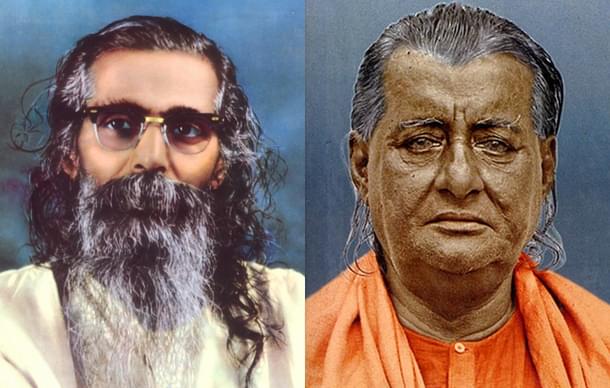
Golwalkar shunned politics. He was more into organisation building. This was the time when politics too had changed in the national arena. The threat of Partition had become very real. Along with the ‘Quit India’ movement, the fate of Hindus and Sikhs in the provinces of Western Punjab and Eastern Bengal, was becoming worrisome.
In the eventuality of Partition, towards which the events were fast gravitating despite the bravado and empty sentimental rhetoric of Congress leaders, the Hindus and Sikhs in Western Punjab, as well as Hindus and Buddhist tribes in East Bengal needed to be protected and safeguarded. So, Guruji Golwalkar felt the need to spread and strengthen the organisation. As the RSS baiters never tire of repeating, 'Anderson and Damle point out that Golwalkar believed that the British should not be given any excuse to ban the RSS.'
The old media in its new online webzines recycle the statement of Guruji Golwalkar regarding the 1942 movement. The writer of the latest piece in The Wire quotes:
“In 1942 also there was a strong sentiment in the hearts of many…. Sangh is an organisation of inactive persons, their talks are useless, not only outsiders but also many of our volunteers did talk like this. They were greatly disgusted too.”
But the quote leaves out two important sentences: “At that time too, the routine work of the Sangh continued. Sangh decided not to do anything directly.” The operational term here is that the Sangh decided not to do anything directly. The British Intelligence reports did say that they could not find any evidence to connect RSS as an organisation with the 1942 uprising. Nevertheless, the police did record many anti-British speeches made at the RSS training camps during the same period.
The British Intelligence reported that on 27 April 1942, at the training camp of the RSS at Pune ‘Golwalkar condemned those who were selfishly helping the British Government.’ On 28 April 1942, he declared that the Sangh has resolved to do its duty even if the whole world goes against it and impressed on the volunteers that they must be ready to sacrifice their lives for the cause of the country. (No.D. Home Pol. (Intelligence) Section F. No. 28 Pol).
Another report of the Home Department, Pol. F. No. 28/3/43-Pol (I) shows the anti-British nature prevailing at the RSS camp at Jubbalpore where a speaker proclaimed that the aim of the Sangh was to drive the British out of India and the sentiment was repeated by other speakers.
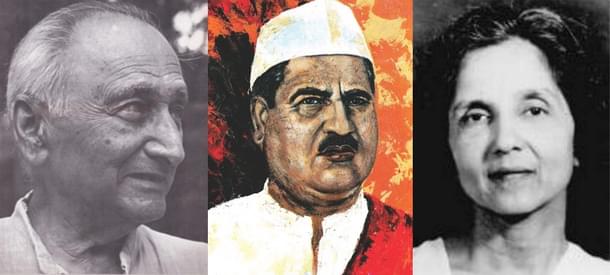
Many freedom fighters received vital assistance from the RSS. Aruna Asaf Ali took asylum in the house of Lala Hans Raj Gupta, and Nana Patil was protected by Pandit Damodar Satavalekar and Sane Guruji stayed with Bhausaheb Deshmukh and Babasaheb Apte.
On 16 August 1942, at Chimur in Maharashtra, many RSS workers participated directly in a Quit India agitation which resulted in a brutal suppression by the British. Dada Naik, who was also the head of the Chimur RSS branch, was sentenced to death by the British. The Hindu Mahasabha leader Dr N B Khare took up his case with the authorities. Ramdas Rampure, another RSS cadre, was shot dead by the British.
Confidential reports blamed two persons for these uprisings. One was Dada Naik who, the report said, was 'was largely behind the recent disturbances' and the other was Sant Tukdoji Maharaj, who was closely associated with the RSS, and was suspected to have been involved in disturbances at Chimur. Later Sant Tukdoji Maharaj became one of the co-founders of the Vishva Hindu Parishad (VHP).
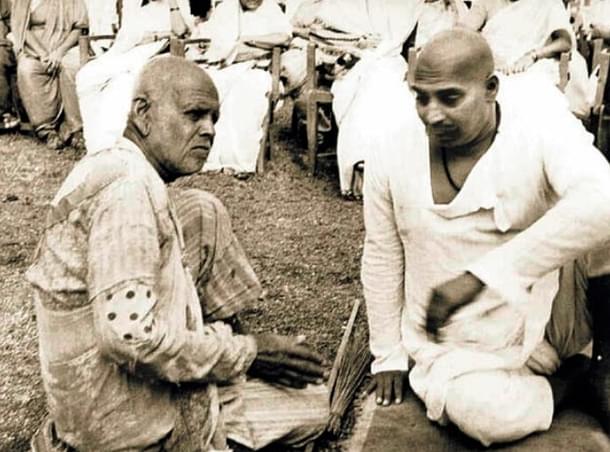
That Guruji Golwalkar did not blame the British overtly for India’s downfall is another canard spread by the old media. In fact, throughout his term as the head of the RSS, he took extraordinary care not to blame external agencies for any of the problems of Hindu society and also the Sangh. For example, in the case of religious conversions, he forbade his followers to put the blame on Christians and Muslims. In this context he stated:
Many workers appear to take delight in blaming others for all ills. Some may put the blame on the political perversities, others on the aggressive activities of the Christians or Muslims and such other faiths. Let our workers keep their minds free from such tendencies and work for our people and our Dharma in the right spirit, lend a helping hand to all our brethren who need help and strive to relieve distress wherever we see it.[Bunch of Thoughts, p.277]
When the ban on RSS could not be legally sustained by the Nehru government and was lifted, Guruji said to the cadre, who uttered intemperate words about Nehru, thus:
Do not let your minds be overcome with bitterness for those who, you feel, have done injustice to you. If the teeth were to bite the tongue do we pull out the teeth? Even those who have done injustice to us are our own people. So we must forget and forgive.
![[Left]: ‘Guruji’ Golwalkar with Ram Manohar Lohia:
Photo courtesy Tapan Gosh. [Right] ‘Guruji’ Golwalkar with Sant Tukdoji Maharaj during the founding of the
VHP](https://swarajya.gumlet.io/swarajya/2017-04/da63a0ff-0523-413c-a2cd-9757b5b9983d/Guruji_lohia_maharaj.jpg?w=610&q=75&compress=true&format=auto)
The Wire’s article associates this view of Guruji Golwalkar with the Bengal famine. Here it should be remembered that during the Bengal famine it was Dr Shyamaprasad Mukherjee, a Hindu Mahasabha leader, closer to the RSS than others, who was instrumental in fighting the famine through relief centres. Madhusree Mukerjee had brought to light the agony Shyamprasad Mukherjee felt and the service he rendered during the famine in her classic ‘Churchill’s Secret War’ (Tranquebar, 2010). British historian James Hartfield points out that Mukherjee called on the cultivators not to sell to government agents, saying 'the bureaucracy has taken away the food for the army and for exports'. He also points out that many of Bose supporters worked in the relief centres run by Shyamaprasad Mukherjee.
His magnanimity and ability to rise above the partisan interests reached a new height when during the Chinese aggression, he declared that in that hour of crisis instead of criticising we should stand with the government. ‘We are a hundred and five more’, he quoted Mahabharata. The stopping of a serial which bitterly attacked Nehru’s blunders on the Chinese aggression, in the RSS magazine ‘Organiser’, made Sitaram Goel, a great intellectual and a fearless historian, a lifelong bitter critic of the Sangh.
However, the services which the RSS rendered to the Indian army, made Nehru revise his own views of the RSS. The Prime Minister who had declared that he would not give even a single inch of land for their flag in the country now invited RSS to participate in the Republic day parade.

References:
-Dina Nath Mishra, RSS: Myth and Reality, Vikas Publishing House, 1980
-Kavita Narawane, The Great Betrayal, 1966-1977, Popular Prakashan, 1980
-C.P.Bhishikar, Shri Guruji, Pioneer of a new era, Sahitya Sindhu Prakashana, Bangalore, 1999
-Kanchanmoy Mojumdar, Saffron versus green: communal politics in the Central --Provinces and Berar, 1919-1947, Manohar, 2003
-James Heartfield, Unpatriotic History of the Second World War , London, Zer0 Books, 2012
-Rakesh Sinha, Builders of Modern India: Dr. Keshav Baliram Hedgewar, Publications Division, 2015
Aravindan is a contributing editor at Swarajya.




